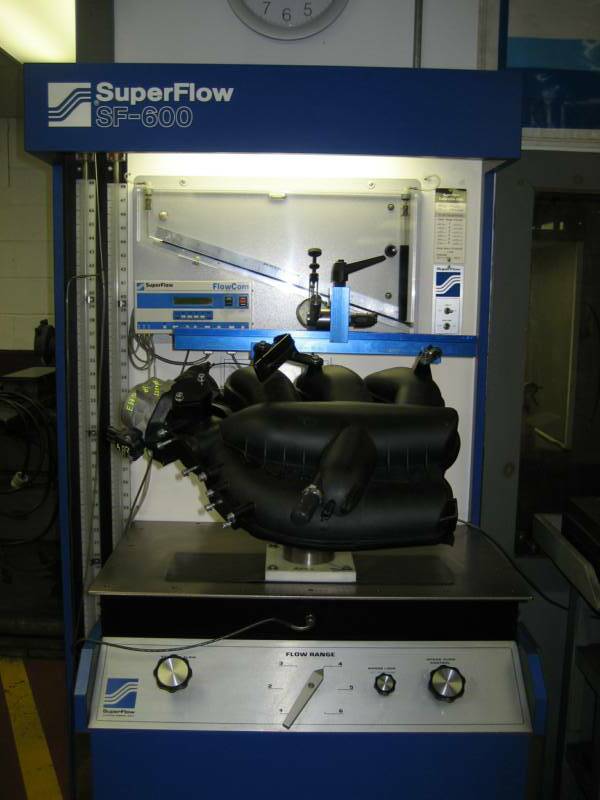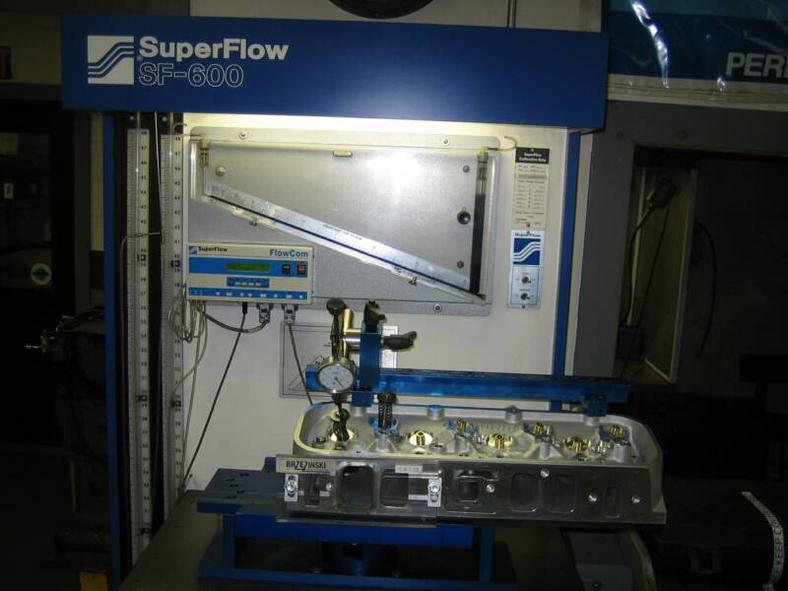Engine Rebuiling-Performance Engine Rebuilding-Automotive Machine Shop
Performance Automotive ® 475 S Prairie St, Bethalto, IL 62010 (618) - 377-0027.................. Site Designed By AMS Web Designs 1-413-566-0037
Cylinder Head Flow Bench Testing
Cylinder head porting modifying the intake and exhaust ports of an engine can improve the quality and quantity of the air flow. Cylinder heads, as manufactured, are usually suboptimal due to design and manufacturing constraints. Porting the heads provides the finely detailed attention required to bring the engine to the highest level of efficiency. More than any other single factor, the porting process is responsible for the high power output of modern engines.This process can be applied to a standard racing engine to optimize its power output as well as to a production engine to turn it into a racing engine, to enhance its power output for daily use or to alter its power output characteristics to suit a particular application
Cylinder Head Flow Bench Testing
Cylinder Head Flow Testing & Porting
What does it take to make power? That's a question builders around the country are trying to answer every day. We know that making power takes a variety of factors working together, and we also know that a large component of the equation is airflow, plain and simple. We've all heard the old analogies about an engine being basically an air pump. However, none of us are bolting together a sensational mill to try and air up the tires. Another way of looking at it is considering the fact that air and fuel mix in an essentially fixed ratio in a performance engine, from about 12.4 to 13:1 air/fuel ratio. Getting more of this mixture into the engine is key to having more energy to burn, and making more power in the process. The ratio, which is calculated by weight, not volume, naturally means that an engine will demand large quantities of air to fill the cylinders of a high-output engine. Now, how are you going to predict a positive step towards power production without knowing how much of that precious air can find its way in via the ports, and then back out the exhaust?
Years ago, porting was largely a matter of intuition and guesswork, leading to experience. There was little in the way of test equipment to empirically evaluate flow, or to gauge the progress of a series of modifications. Largely it came down to "cut and try," and it was a little like flying blind. Sometimes, just because a modification looks good doesn't mean it results in increased airflow. The need for data led to the development of commercial flow benches. With the bench, racers and engine builders gained the tools required to gain solid information in comparative testing and modifications. Flow testing has come a long way in recent decades, and along with it, the quality of data and the power output of our engines have developed significantly. More knowledge, better techniques, and improved flow have moved the bar to where today's street engines often make more power than all-out race engines of the '60s.
Up Beat On Depression
A basic flow bench works by creating a pressure differential across the orifice, and then measuring the pressure drop via a manometer. Generally, these days we use a pressure drop equivalent to 28-inches of water in a standard manometer as a fixed pressure differential at which the flow in cubic-feet-per-minute-of-air is recorded. In the days of old, flow benches were nowhere near as capable in capacity as those currently manufactured. It was not uncommon for test pressure differentials as low as 3 inches of water to be used as the depression. Although cfm of airflow can be recorded at low pressure drops, it's the pressure differential, or depression, that's the force acting on the air to move it through the part being tested. Higher depressions equate to more force, and with that force, the airflow is moving at a much higher volume and velocity. Testing at a low pressure drop will produce a true measure of airflow, which can be simply converted mathematically to the equivalent flow at any other pressure differential. However, the actual flow characteristics are likely to change at higher pressure differentials, since the velocity of the airflow is increased under these test conditions.





